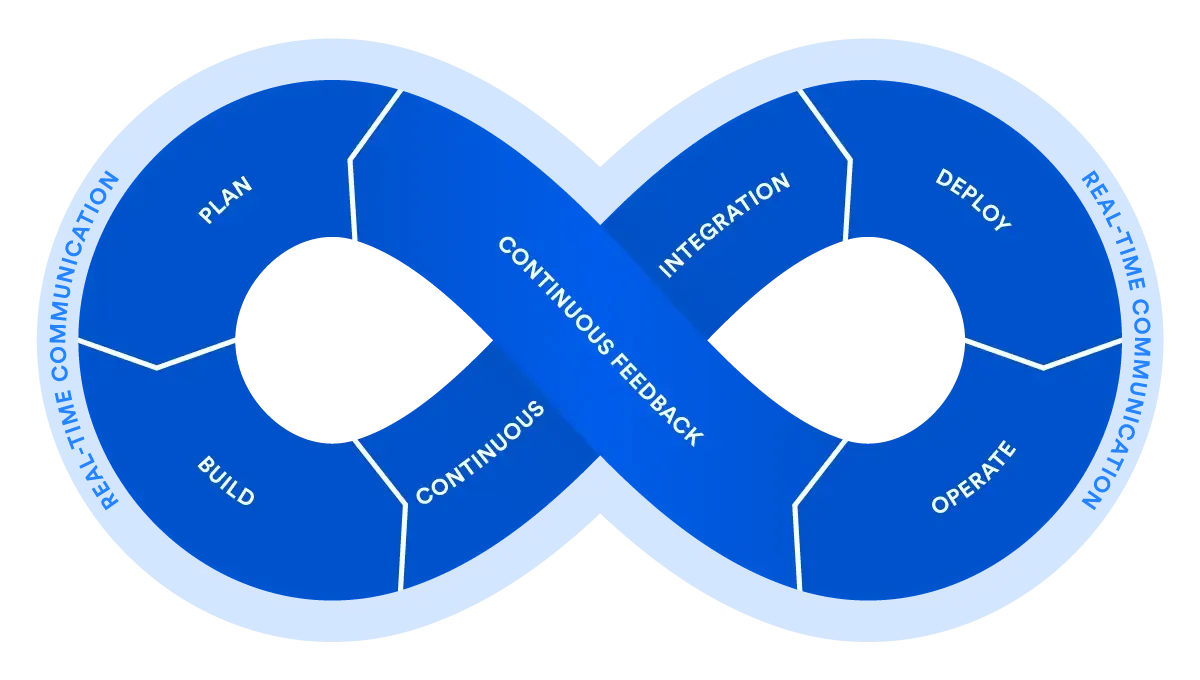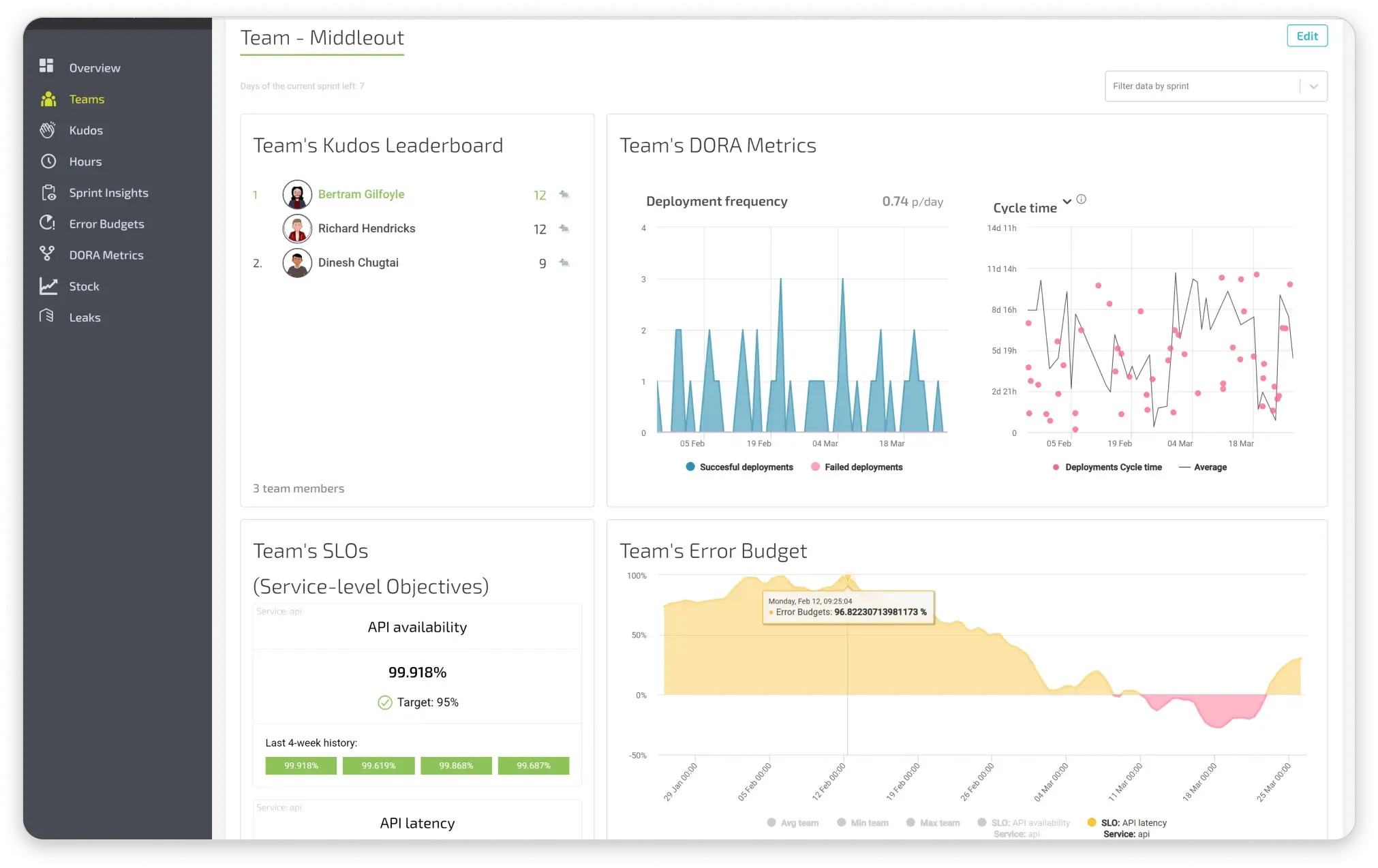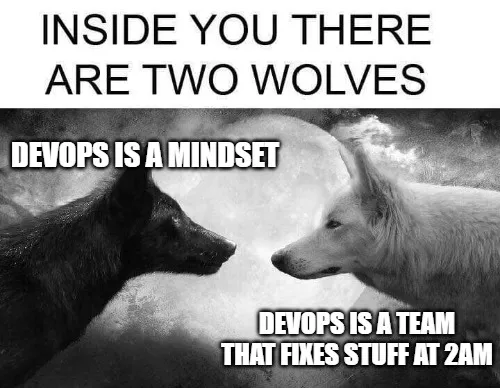Understanding the DevOps Loop and the Impact of Slow Stages

Published on 14 February 2025 by Zoia Baletska
In the fast-paced world of software development, the DevOps loop is a crucial framework that ensures a seamless flow from development to deployment. The DevOps loop consists of interconnected stages that work together to accelerate delivery, improve quality, and foster collaboration. However, when one of these stages slows down, the entire workflow is disrupted, leading to costly delays and inefficiencies.

The DevOps Loop: A Continuous Cycle
The DevOps loop is an iterative process that encompasses the following stages:
-
Plan: Define objectives, prioritize tasks, and strategize workflows.
-
Develop: Write, review, and manage code efficiently.
-
Build: Compile and package code into deployable artifacts.
-
Test: Run automated and manual tests to ensure quality.
-
Release: Deploy new features and updates to production.
-
Deploy: Ensure smooth rollouts with minimal downtime.
-
Operate: Monitor and maintain applications in production.
-
Monitor: Collect and analyze data to optimize performance.
Each stage is interdependent, and any slowdown in one phase can create a domino effect that hampers the entire software delivery pipeline.
What Happens When a DevOps Stage Slows Down?
1. Planning Bottlenecks
If the planning phase takes too long, development teams lack clear direction, leading to inefficiencies and delays in execution. Incomplete or unclear requirements result in rework and confusion, slowing down the entire process.
Impact:
-
Wasted development efforts
-
Increased project costs
-
Missed business opportunities
Solution:
-
Implement Agile methodologies for iterative planning
-
Utilize backlog grooming and prioritization tools
2. Development Delays
When development slows down due to inefficient coding practices, technical debt, or lack of collaboration, it creates bottlenecks for subsequent stages.
Impact:
-
Longer time-to-market
-
Higher development costs
-
Reduced competitiveness
Solution:
-
Encourage pair programming and code reviews
-
Leverage automation for repetitive tasks
3. Build Stage Inefficiencies
Slow build processes caused by poorly optimized build pipelines, dependency issues, or infrastructure limitations can lead to significant delays.
Impact:
-
Extended development cycles
-
Increased frustration among developers
-
Higher infrastructure costs
Solution:
-
Optimize build scripts
-
Adopt cloud-based build solutions for scalability
4. Testing Bottlenecks
If testing takes too long due to inadequate test coverage or manual processes, releases get delayed, and bugs may slip into production.
Impact:
-
Increased defect rates
-
Poor user experience
-
Potential revenue loss due to downtime
Solution:
-
Implement automated testing frameworks
-
Continuously update test cases based on production feedback
5. Release Hiccups
A slow or unreliable release process can introduce deployment errors and prolonged downtimes.
Impact:
-
Reduced customer trust
-
Revenue loss due to delayed features
-
Compliance risks
Solution:
-
Use feature toggles and canary releases
-
Automate deployment workflows
6. Deployment Challenges
Delays in deployment due to configuration issues, manual approvals, or insufficient automation can derail the entire pipeline.
Impact:
-
Higher operational costs
-
Inefficient resource utilization
-
Frustrated teams
Solution:
-
Implement Infrastructure as Code (IaC)
-
Use CI/CD pipelines for faster deployments
7. Operational Delays
Slow responses to incidents or inefficient monitoring can lead to prolonged outages and dissatisfied customers.
Impact:
-
Customer churn
-
Reputational damage
-
Regulatory penalties
Solution:
-
Implement proactive monitoring with real-time alerts
-
Establish clear incident response protocols
8. Monitoring Gaps
A lack of real-time insights can make it difficult to identify performance issues early, leading to slow responses and long-term inefficiencies.
Impact:
-
Unoptimized resource allocation
-
Higher infrastructure costs
-
Missed optimization opportunities
Solution:
-
Use observability platforms for comprehensive insights
-
Conduct regular performance audits
The Financial Impact of Slow DevOps Stages
When any stage in the DevOps loop slows down, the entire workflow suffers, leading to increased operational costs, lost revenue opportunities, and reduced customer satisfaction. Businesses that fail to optimize their DevOps processes may struggle to stay competitive in the market.
How to Avoid Costly Delays:
-
Continuously optimize and automate workflows
-
Leverage tools like Agile Analytics to identify bottlenecks
-
Foster a culture of continuous improvement

A well-functioning DevOps loop is essential for delivering high-quality software efficiently. By addressing bottlenecks at each stage and embracing automation and best practices, organizations can streamline their workflows, reduce costs, and enhance customer satisfaction. Investing in DevOps optimization not only improves productivity but also ensures a healthier bottom line.
Supercharge your Software Delivery!
Implement DevOps with Agile Analytics
Implement Site Reliability with Agile Analytics
Implement Service Level Objectives with Agile Analytics
Implement DORA Metrics with Agile Analytics





